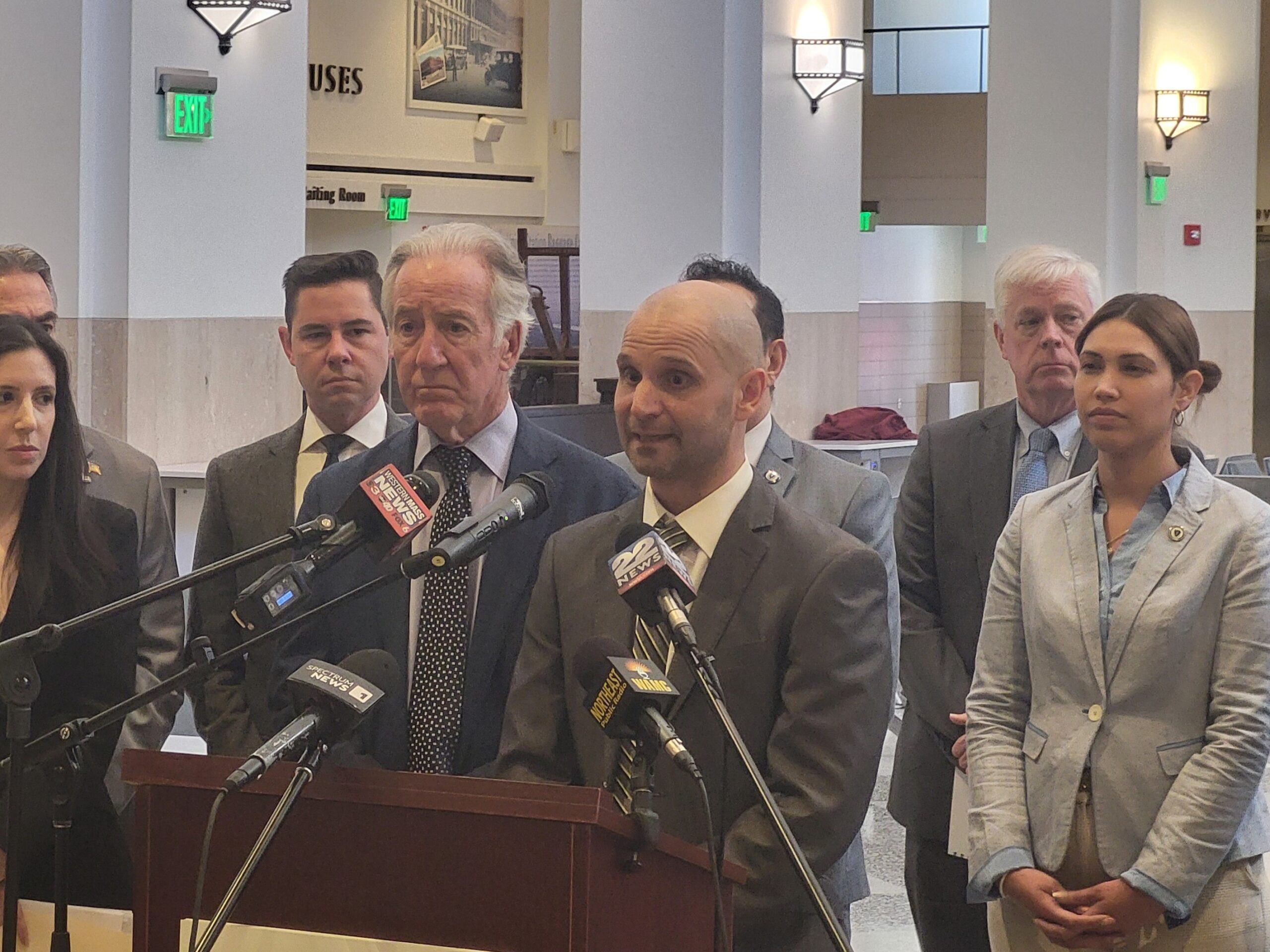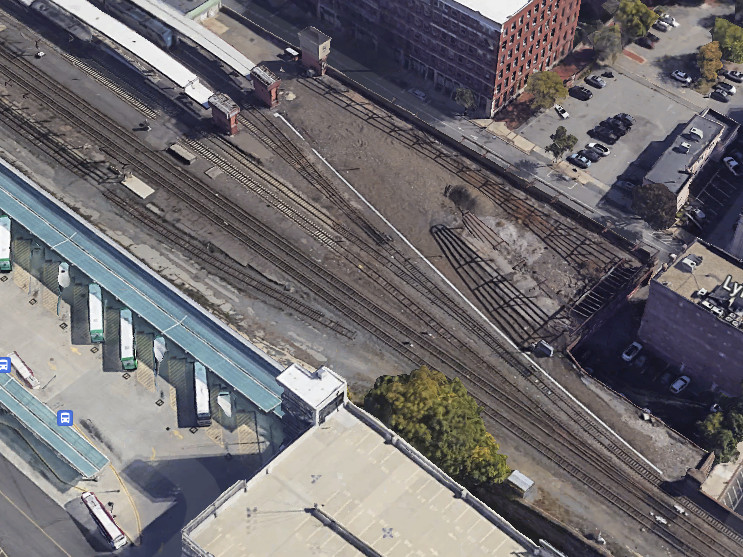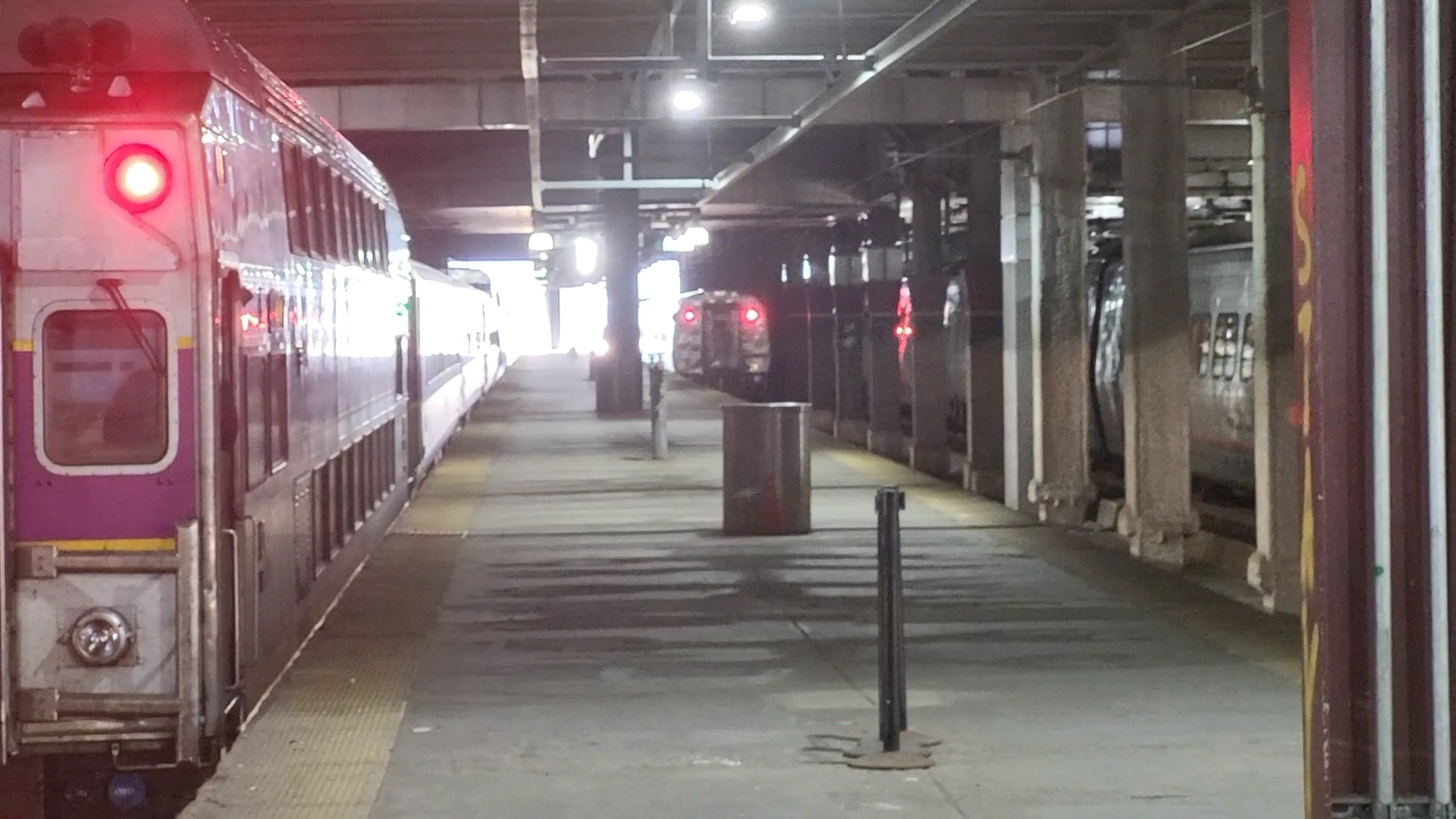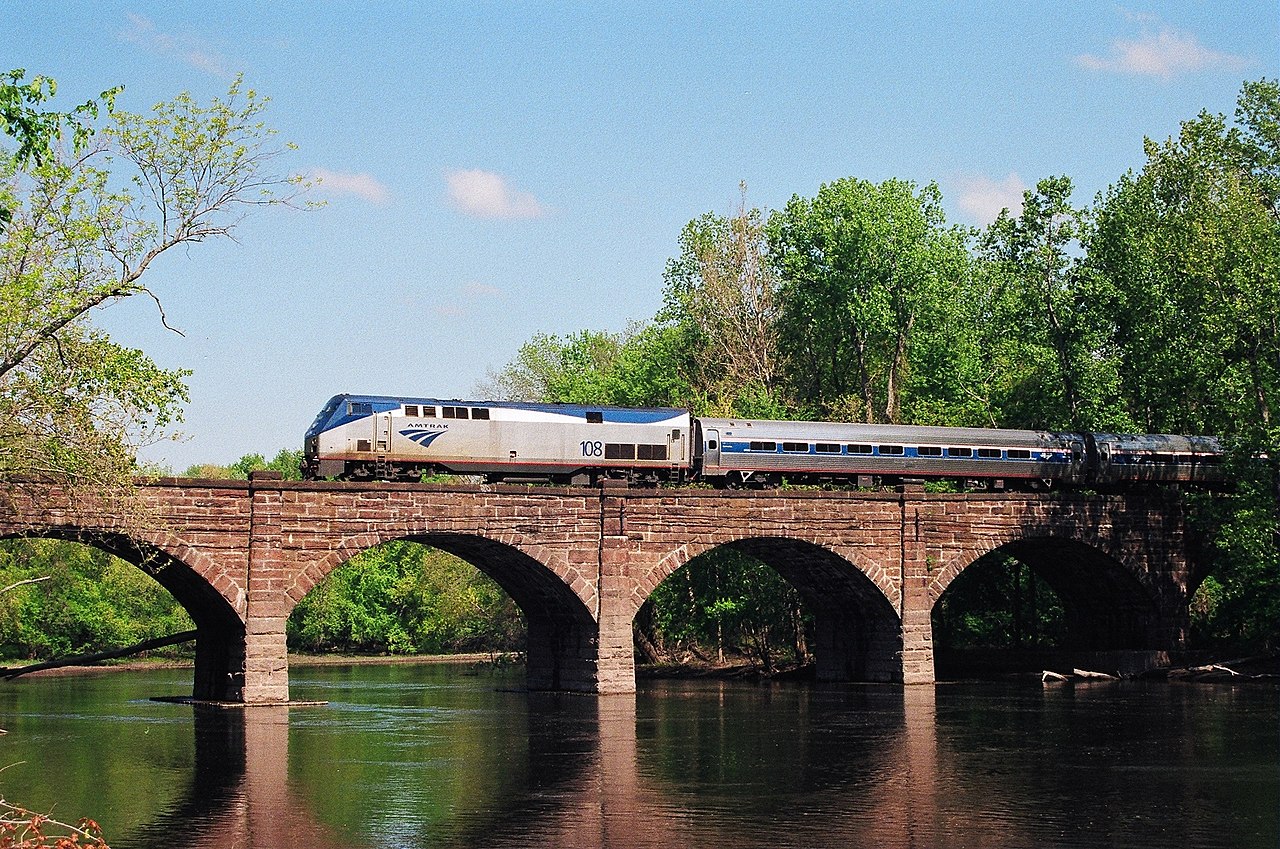Analysis: Slow Train of Compass Rail Coming; but Is That Sufficient?…

The man, the myth, the legend, East-West rail director Andy Koziol assuring progress is afoot. (WMP&I)
SPRINGFIELD—At the risk of succumbing to cliché, Compass Rail, nee East-West Rail, is on track. The money is in place to bring service into being and more is on the way. The press conference that local, state and federal officials held on April 22 projected confidence in this eventual result. Per the timelines outlined, though, this project is hardly high-speed.
There is plenty of rail work afoot, nonetheless. The Massachusetts Department of Transportation is looking at reconfiguring tracks at Union Station. This would allow for some operational flexibility. Just outside the station, Amtrak, which owns the line from Springfield to New Haven, has state-of-good-repair work in store for the city. Plus, Connecticut is moving ahead with work that will further service to Springfield.
“A big reason why I joined MassDOT was just because of the ambitious plans that Massachusetts has for passenger rail,” said Andy Koziol, the state’s West-East Rail Director. “So, there’s a lot on our plates right now. Things are in different phases. We have things in planning and things in design. Projects, that are in the near term, will be under construction.”
This press conference appeared to offer assurance that work was underway. Flanked by Congressman Richard Neal, a plethora of legislators and other regional luminaries, Koziol and Meredith Slesinger, MassDOT’s head of rail and transit division, outlined upcoming steps. Various elements of outreach and planning for work and design will begin this year. Hard construction is much further off.
Current projections put the start of rudimentary service—other than Amtrak’s daily rountrip train to Chicago—in 2029. Shovels will not even get into the ground for three more years. Some of the other work, such as reconfiguring Union Statin’s track geometry are only funded through the planning phase.
Governor Maura Healey made good on a promise to lean into East-West rail. Koziol’s appointment is evidence of that. MassDOT has since incorporated East-West rail into Compass Rail to reflect the four directions of service that will ultimately flower out from Springfield. Pushing it into reality remains a long-haul task, however.
Until relatively recently, the north-south axis has received more attention. Consequently, that corridor has quickly capitalized on money from President Joe Biden’s Infrastructure Investment & Jobs Act. Those funds, Neal noted at the press conference, augment existing annual appropriations for rail. Some senators, including Elizabeth Warren, had raised concerns about Republican cuts to these programs. However, Neal’s office confirmed existing programs had been funded in the current federal budget.
Currently, the most robust service runs south into Connecticut and on to New York. With the Nutmeg State getting more funds to expand double-tracking to New Haven, more service should follow. Amtrak has upgraded plans for the Springfield Line bridge over the Connecticut River from renovation to full replacement. That will improve service and reliability further.

The track geometry complicates service, but plans are underway to design changes to the setup. (via Google Maps)
To the north, the Valley Flyer linking Springfield with Greenfield, Holyoke and Northampton, has been wildly successful, although track geometry at Union Station here limits the lines full potential. This could change with the Springfield Area Track Reconfiguration Project (SATRP). Backup moves cannot be entirely eliminated due to Union Station’s location relative to all lines it serves. However, it could ameliorate delays for north-south trains that stop in Springfield but do not terminate there.
The state has received federal grant funding to begin design work for SATRP. This should finish by next year according to MassDOT, but it is only funded through design.
SATRP has implications for East-West service as well. A major goal is to remove conflicts with CSX freight trains. Right now, trains from Boston that go on to Albany must remain on the CSX mainline through the station. There is a platform, but riders must walk across the tracks to enter the station by way of another platform. This project would open another platform and divert passenger trains off CSX’s mainline while dwelling at the station.
The startup project for rail service from Springfield to Boston already has full funding. Last year, the US Department of Transportation awarded the commonwealth $108 million under the Consolidated Rail Infrastructure and Safety Improvements (CRISI) program. This funds capacity improvements (select double-tracking) west of Worcester and other infrastructure further east to avoid freight conflicts.
At the press conference, officials also announced it was working USDOT’s Corridor ID program on a service development plan for the Boston to Albany corridor. This will identify additional work to expand service further.
What East-West rail/Compass Rail does not yet have is expediency—or at least not enough. In fairness, things are moving more quickly than they had during much of the preceding decade.

A Chicago-bound Lake Short Limited departs South Station in Boston. Officials say East-West rail is leaving the station, too. (WMP&I)
“West-East Rail initiatives are advancing, thanks in large part to success with federal discretionary opportunities. Projects are moving quickly considering the technical nature of the work and the variety of stakeholders involved,” a spokesperson for MassDOT said.
But is that acceptable?
There is some precedence for MassDOT’s current tempo. Amtrak’s Springfield Line had hosted far more service than the Boston & Albany west of Worcester does now. However, the process of upgrading it to support more Amtrak service and the Hartford Line commuter service took Connecticut almost a decade.
Yet, MassDOT also indicated this pace was not inevitable and it could change as more staff come on as funding becomes available.
“As planning progresses for West-East Rail, and as funding becomes available, MassDOT will increase staffing for positions appropriate to the work that will need to be done, for example, in the areas of project design and procurement,” the agency’s statement continued.
Outside Union Station’s footprint, Amtrak has its own projects in Springfield. The most significant of these are on Spring and Sweeney interlockings that are on the southerly approach to the station. Documents filed with the Northeast Corridor Commission, which oversees rail infrastructure in the Northeast, the project will upgrade and fully separate these interlockings. An Amtrak spokesperson indicated that while these interlocking projects are independent of MassDOT’s SATRP, they would complement the reconfigurations at Union Station itself.

An Amtrak train running on the Springfield Line in Windsor, Connecticut. (via Wikipedia)
Amtrak will draw from its capital budget to upgrade the old interlockings in Springfield. The NEC Commission’s documents peg the project cost between $16 million and $18 million. Work should begin this year.
Springfield is not the only place with activity, however. MassDOT is lurching toward public outreach on the station in Palmer. Pittsfield State Rep Tricia Farley-Bouvier, who was at the press conference, indicated progress was underway on a capacity project in her city, too. Governor Healey funded these projects using capital funds after they did not make the cut in last year’s state operating budget.
Then there is the question of service beyond Massachusetts.
Slesinger, the rail and transit director, did not go into detail about MassDOT’s relationship with any one state’s DOT. However, she indicated that planning was ongoing in all states that border Western Mass and would connect to Compass Rail.
“Their planning work is complementary to what we’re doing with Amtrak,” Slesinger said. “And certainly, we don’t see rail as just something that benefits the Commonwealth of Massachusetts, but it’s beneficial for the entire region.”
Still, the relationship with Albany could be the most crucial as the city implicates service with the commonwealth’s westernmost frontier. By contrast, service north and south from Springfield to other communities inside Massachusetts does not require as much from Vermont and Connecticut respectively. The Nutmeg State has already firmly committed itself to the Springfield Line. Vermont has plenty of rail enthusiasm but the Valley Flyer is not contingent on the Green Mountain State.

Pittsfield keeping its eye on the prize. (via Wikipedia)
Thus, the relationship with New York will be critical to growing service out to Pittsfield and the Berkshires. There is already a seasonal train to Penn Station in New York, but obviously the goal is regular Boston to Albany service with stops in both Springfield and Pittsfield.
Farley-Bouvier said she had confidence in the Healey administration and its outreach to New York Governor Kathy Hochul. The key was ensuring that the region remained part of the conversation.
“We, the representatives of Berkshire County need to always be at the table and saying that this is an entire State of Massachusetts project,” she said. Farley-Bouvier noted that the investments are especially crucial as her county and Franklin County face population losses.
“Where we invest in the state, that is where we will grow,” Farley-Bouvier said. “And we expect the same level of investment in the Berkshires as in any other part of the state.”